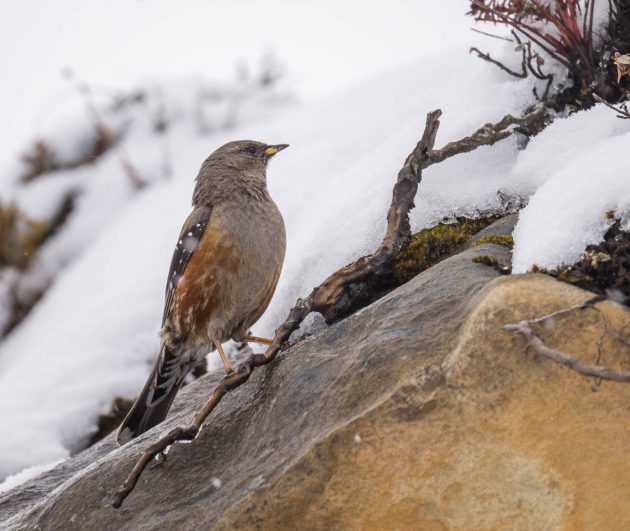[adinserter block=”1″]
In June 2023, I once more went to Balangshan, a mountain about 3 hour’s drive from Sichuan’s capital Chengdu – and once more with Alpinebirding, fortuitously now not for them to partially take care of complicated covid restrictions however solely to assist me discover birds that I’m too incompetent a birder to search out by myself.
The broader Balangshan space has three completely different components – the low elevation of close by Wolongshan, the upper a part of the highway throughout the mountain that’s known as the tunnel space amongst birders, and the precise Balangshan move, which reaches an altitude of 4500 meters or so. And that’s the space this put up, the primary in a sequence of three, covers.
One warning: Should you ever plan to go to Balangshan, be sure to verify with me first – I like to recommend avoiding the place each time I’m there, as that just about invariably means heavy fog alternating with rain. Or as this time (bear in mind, in June) snow. I’m mildly stunned and grateful that given this example, Alpinebirding nonetheless accepts me as a consumer.
The climate circumstances meant that sometimes, the Alpine Accentors needed to focus their foraging efforts on the few components not lined within the white stuff.
Just like the singing of Taylor Swift, the singing of feminine Alpine Accentors attracts males, as described here. Although in actuality, I assume most Taylor Swift followers are feminine, however that doesn’t actually match into my storyline.
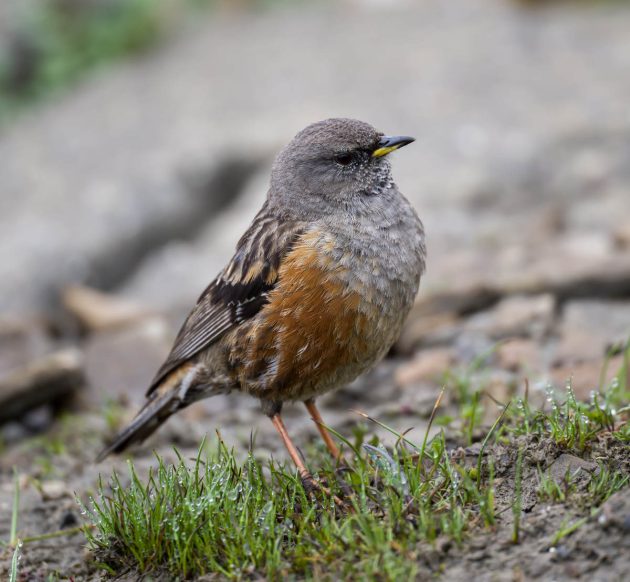
If the analogy holds, one ought to assume that Taylor Swift’s more moderen songs are extra complicated than earlier ones, because the paper states that “older females, which laid bigger clutches, sang extra complicated songs”.
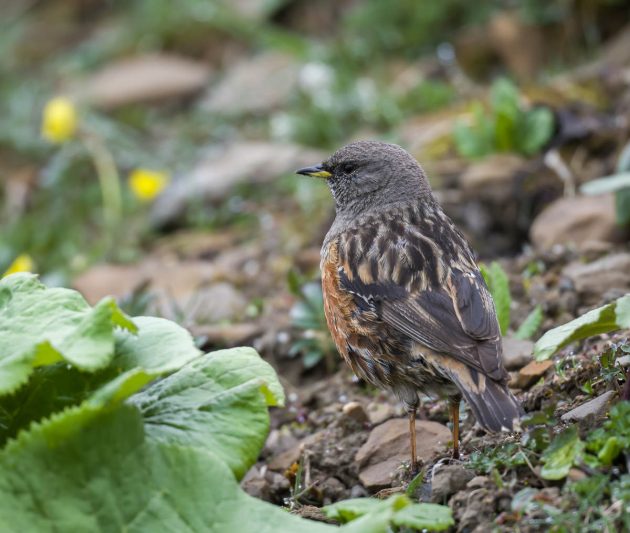
Apparently, Alpine Accentors breed in polygynandrous (multi-male and multi-female mating) teams: an alpha male and 1-3 unrelated subordinate males share a wide variety that overlaps with that of 2-4 unrelated females.
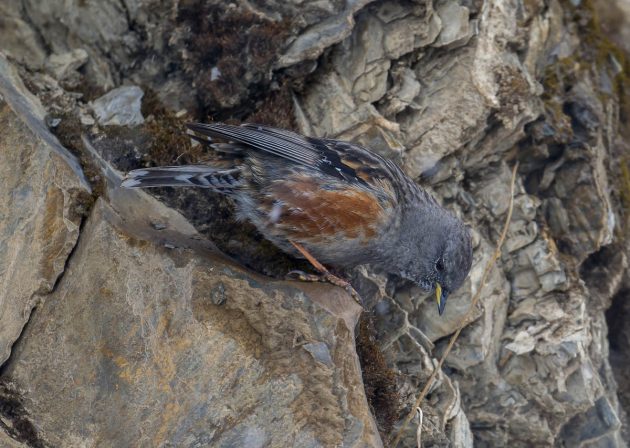
One of the best feminine technique appears to be to mate with as lots of the males as potential, as this implies extra assist in feeding the chicks by all of the potential fathers (I assume the fathers don’t have quick access to paternity assessments).
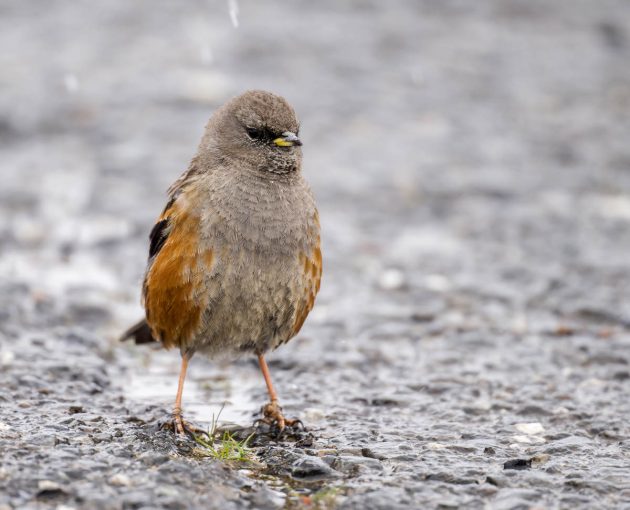
Larger-ranking females appear to do that higher than lower-ranking ones, leading to larger survival charges for his or her chicks (source).
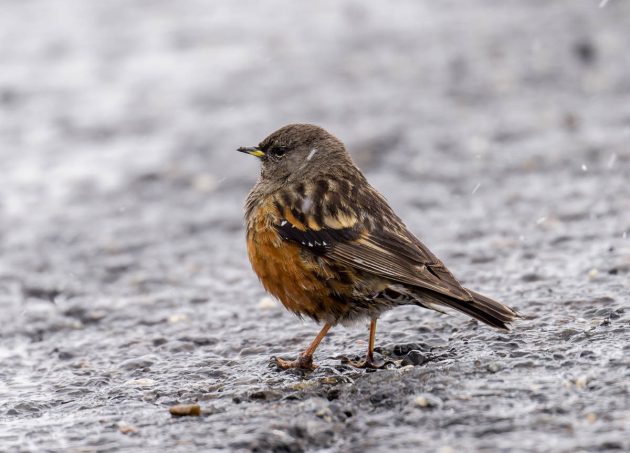
The Tibetan Snowcock at first look appears a bit like Obelix to me – I assume it’s the stripes.
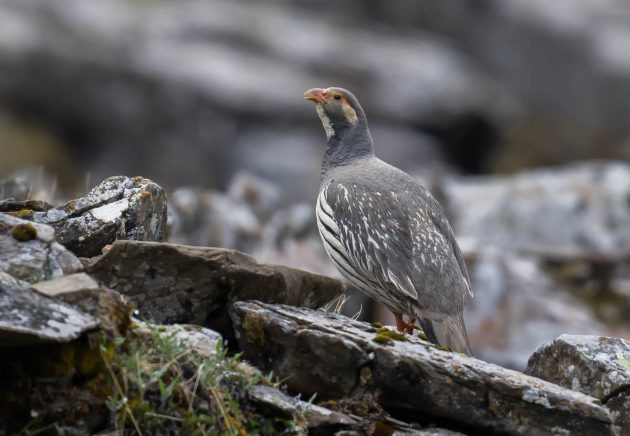
Being lazy, a bunch of researchers used digital camera traps to analyze the species reasonably than following the birds straight (which might have had some well being advantages).
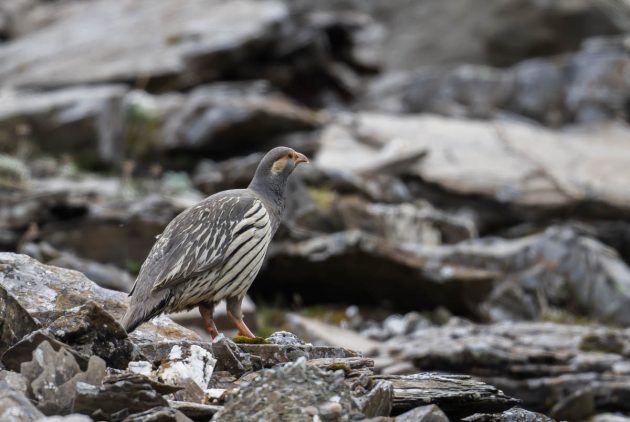
They discovered that the species is diurnal (nicely, utilizing cameras, would they even have seen nightly actions?), with peak exercise between 8 and 10 am (when workplace staff undergo their e mail inbox) and 6 and eight pm (when workplace staff have their first beer).
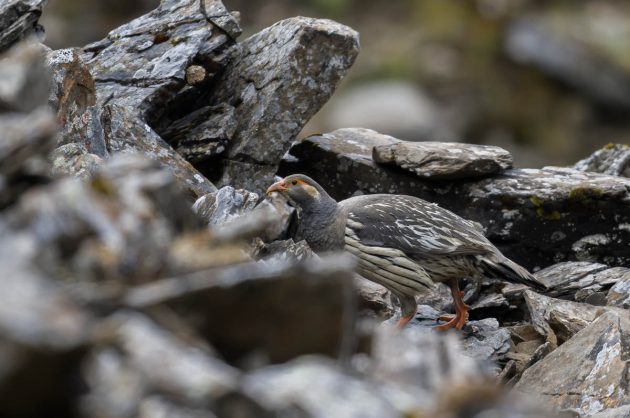
They usually discovered that Tibetan Snowcocks like excessive elevations, light slopes, and low ranges of vegetation. With regard to their music style, the analysis outcomes have been inconclusive.
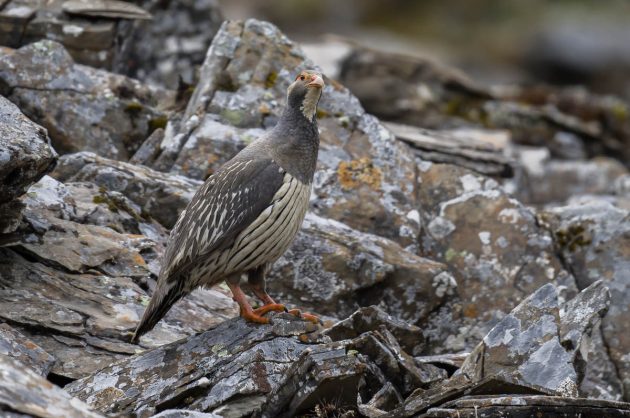
Purple and yellow are the colours symbolizing a number of various things – for instance, McDonald’s, the Individuals’s Republic of China, Mastercard, and Kodac. Individually, they’re additionally the colours permitting differentiation between the Purple-billed Chough and the Yellow-billed Chough.
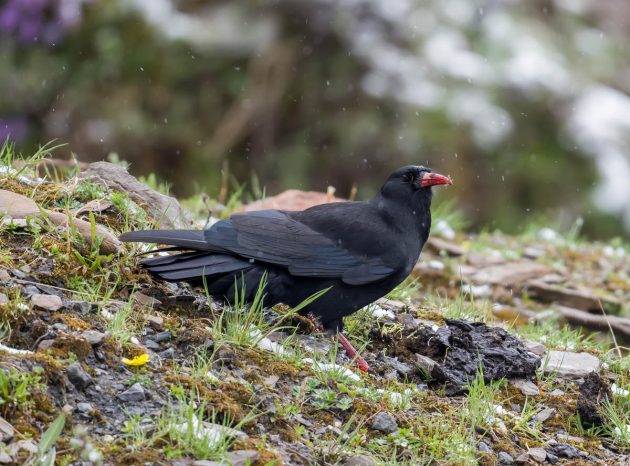
Being a administration guide, I’m well-versed within the science and artwork of bullshitting. Nonetheless, I’m considerably impressed by a paper titled “Integrating advances in inhabitants and evolutionary ecology with conservation technique by way of long-term research of red-billed choughs”. It has all of the buzzwords one might want for – “built-in”, “ecology”, “conservation”, “long-term”.
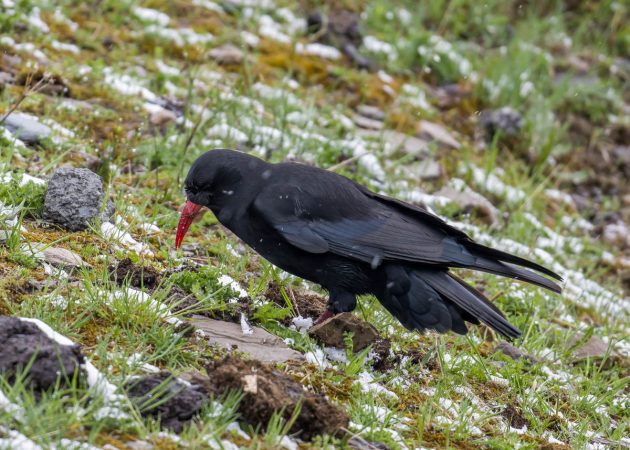
And it’s not simply the title. Within the summary, the authors state that they “proactively aimed to attain the twin and interacting targets of advancing inhabitants and evolutionary ecology and advancing efficient conservation”. I used to be sort of afraid they forgot to make use of the phrase “proactive”, however no, I needn’t have frightened.
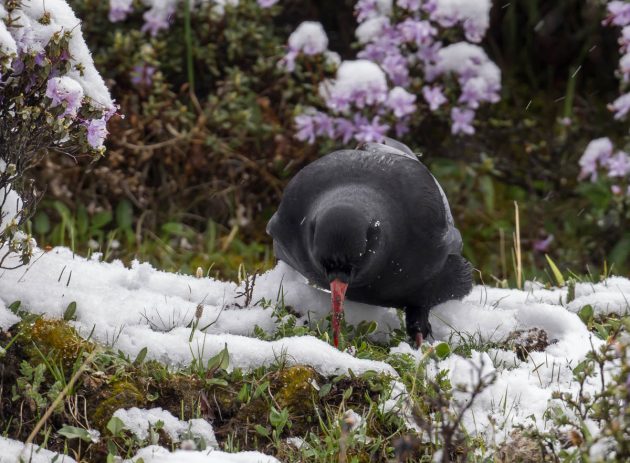
And the final a part of the summary is one other clear winner: “This case research demonstrates a full iteration by way of the sequence of major science, evidence-based intervention, quantitative analysis, and suggestions that’s advocated in conservation science however nonetheless occasionally achieved. It thereby illustrates how pure science advances knowledgeable conservation actions to make sure the (short-term) stability of the goal inhabitants, and the way conservation-motivated analyses fed again to advance elementary understanding of inhabitants processes.”
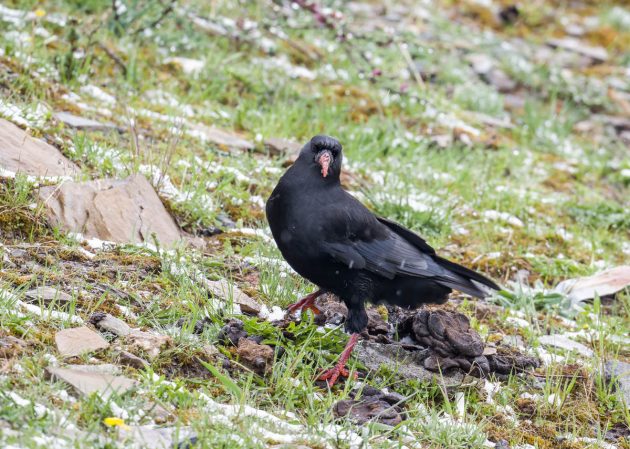
Full iteration! Proof-based! Suggestions! Basic understanding!
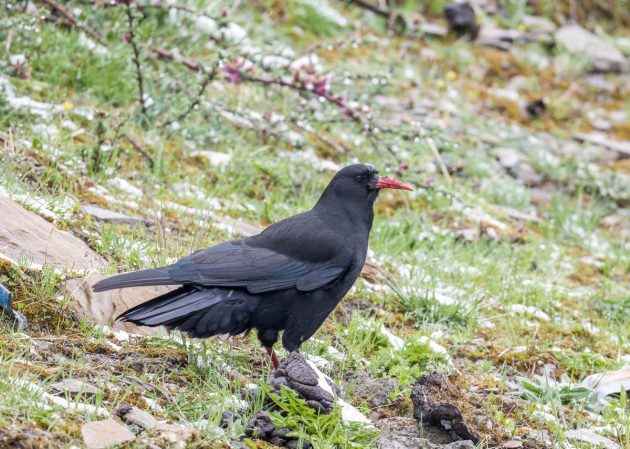
In a 1997 paper, Spanish researchers describe feather mites on Purple-billed Choughs that appear to truly have a constructive impact on the birds, or not less than not a damaging one.
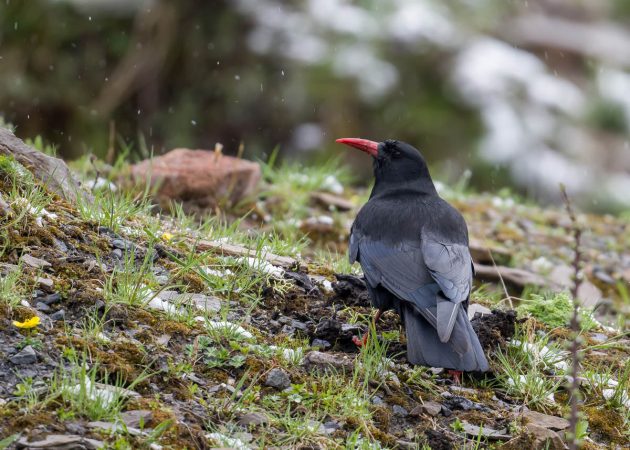
However I solely appeared on the summary in a short time, as I missed any thrilling buzzwords.
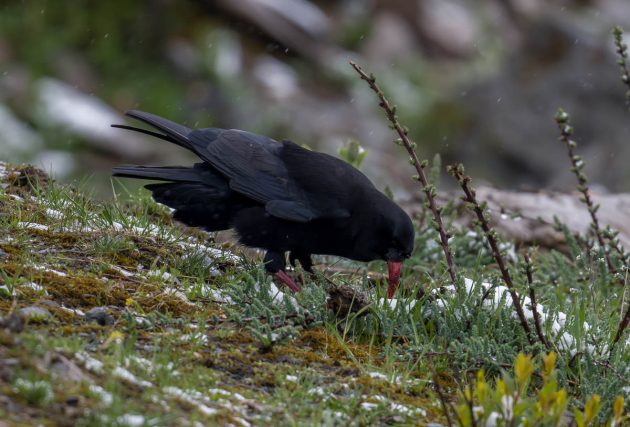
A third paper not less than used the time period “Age-Particular Reproductive Efficiency”. Amongst different issues, it finds that feminine Purple-billed Choughs with a number of chicks die youthful whereas these with fewer chicks when younger regularly stay longer. Moms with a number of younger children will discover these findings very convincing.
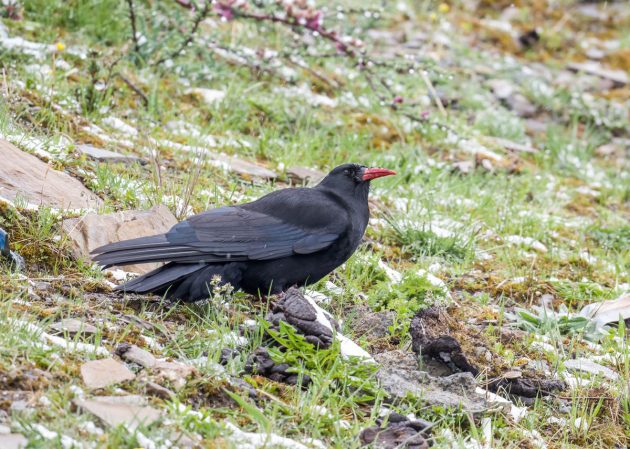
The HBW appears to be a bit unsure in regards to the correct identify of Pyrrhocorax Graculus – is it Yellow-billed Chough or Alpine Chough? To be protected, each names are used on the identical web site.
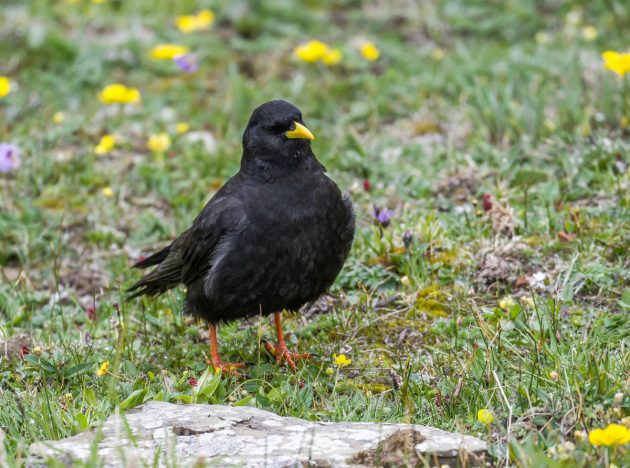
No less than the second identify hints on the larger elevation standing of the Yellow-billed Chough. The HBW notes considerably disparagingly that the chicken “may be very a lot a scavenger about human habitation, particularly so about ski resorts in Europe”. This sounds true – I’ve seen the chicken feeding on discarded human meals proper on the Balangshan move (although there are not any skiers there, simply Chinese language vacationers, a few of whom fairly stunned by the chilly at 4500 meters, having turned up in shorts and T-Shirt. So that they flip to purchasing fatty meals from the distributors on the move hoping to develop an insulating layer of fats, then notice the meals is reasonably unhealthy, throw a part of the meals away, which then finally ends up being eaten by the choughs).
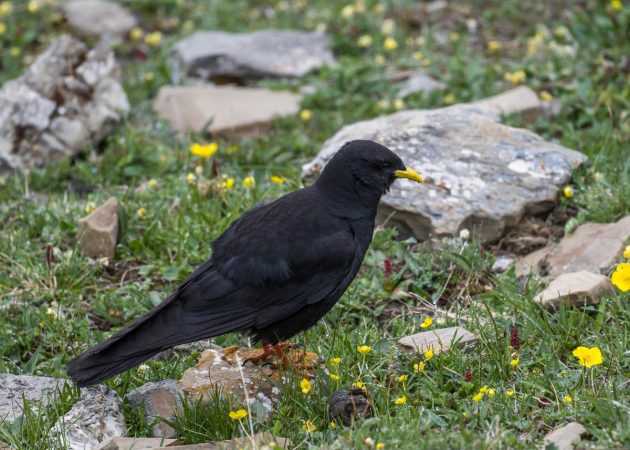
If such human meals is just not accessible, the Yellow-billed Chough goes again to its authentic eating regimen of (not less than in Europe) grasshoppers, as described here.
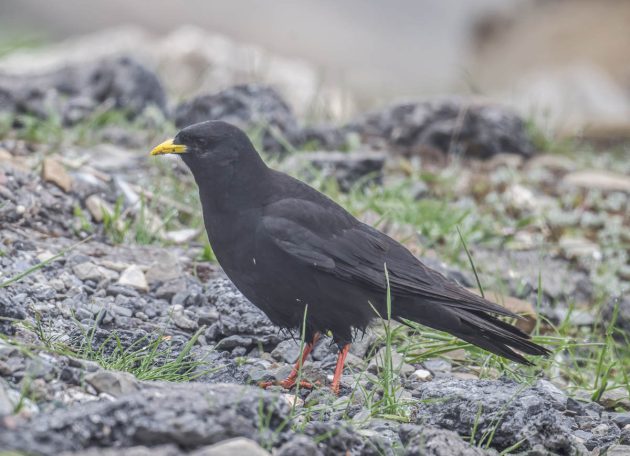
The calls of the Large Laughingthrush are fairly frequent each considerably beneath the Balangshan peak space and on the tunnel space that will likely be described in a future put up. The HBW appears to be a fan, describing the vocalization as “loud, clear, candy, fairly wealthy and melodious”.
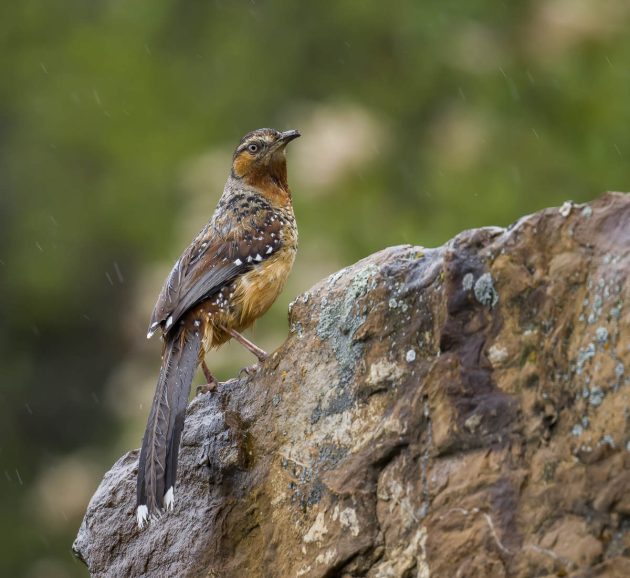
Me, I nonetheless choose The Nationwide, regardless of the marginally disappointing newest album.
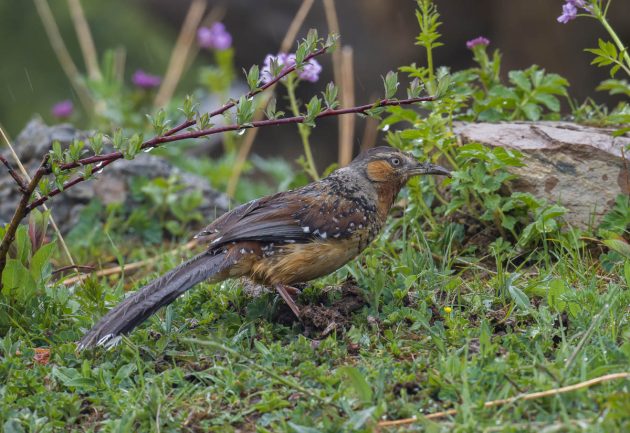
This species may certainly advantage a bit extra analysis – the one paper I discovered on its breeding checked out solely 7 nests (of which 3 failed).
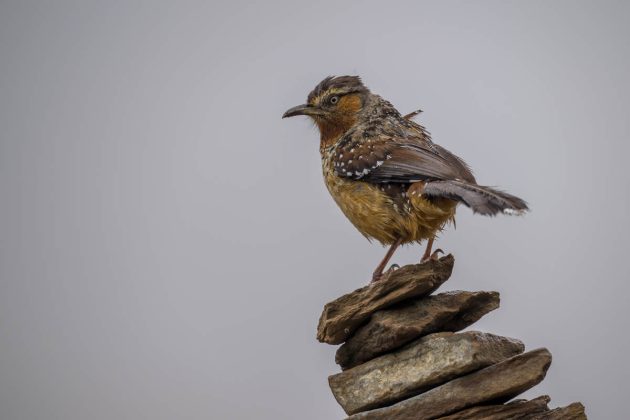
It appears the species (like me) is just not very keen on their offspring – the research discovered that nest attentiveness through the day decreased from 93% earlier than hatching to 59% throughout days 3–7 of the nestling interval, i.e., when the chicks began to babble and name for consideration. Or possibly there was simply extra want to gather meals, however I like the primary clarification higher.
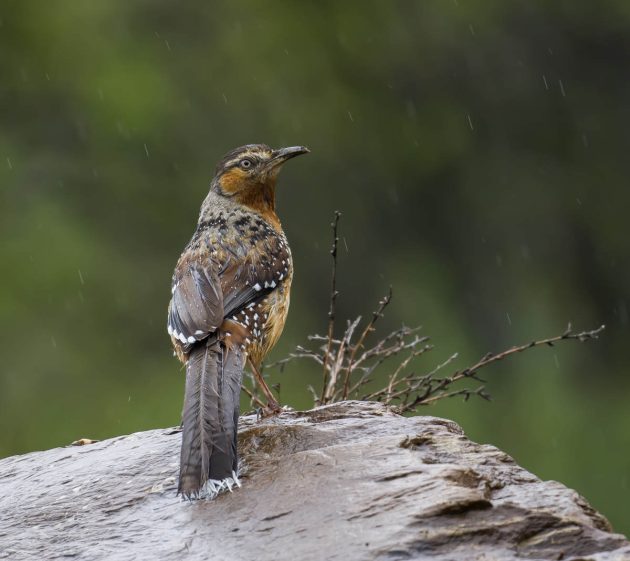
There’s a cottage business of publishing papers on DNA sequences of chicken species just like this one on the Blue-fronted Redstart: “The entire mitochondrial genome of Phoenicurus frontalis (Passeriformes: Muscicapidae)”. I assume that with about 10,500 chicken species, this leaves some work for future generations of ornithologists, although I can not say I discover this very thrilling. Additionally, I discover it sort of unusual that such a reasonably generic paper has 6 listed authors, however possibly that features the man who purchased espresso and sandwiches for the folks really engaged on the paper.
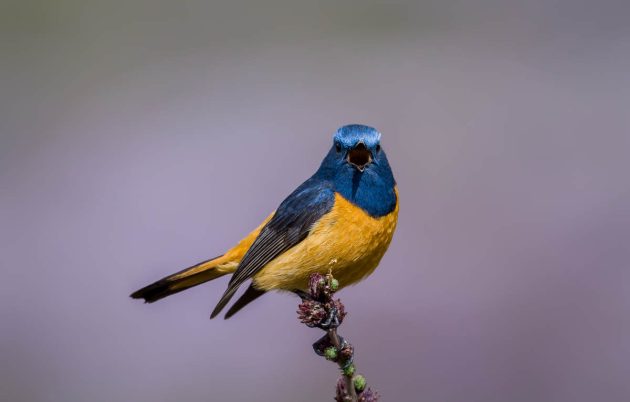
However what if the alternative – trying to find papers on the Blue-fronted Redstart – is “Comparative evaluation of the intestinal tract microbiota and feeding habits of 5 sympatric flycatchers”?
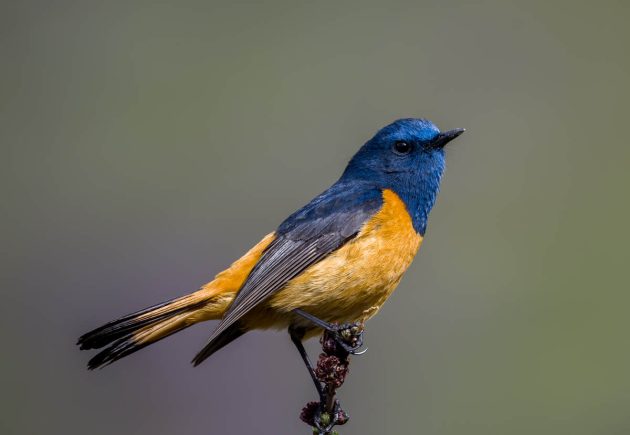
The paper not less than accommodates the knowledge that the eating regimen for Blue-fronted Redstarts is a mix of bugs (>70%) and plant fruits (<30%) – and naturally, in comparison with the opposite redstarts usually are not that all in favour of fruit, this additionally has an impression on the intestine microbes. Nonetheless, not a chunk of data I might need to share at a dinner desk except on a birding tour with very nerdy fellow vacationers.
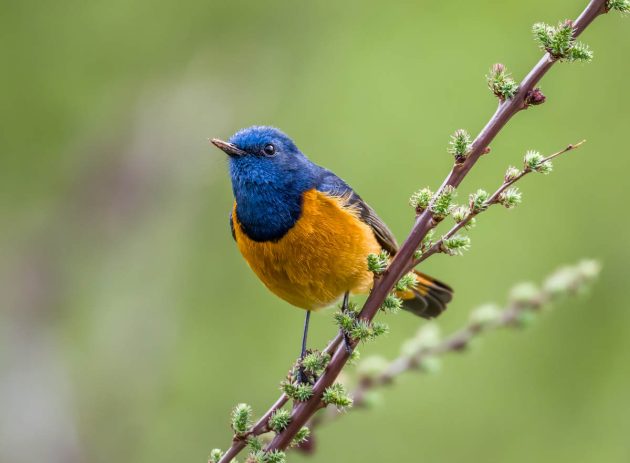
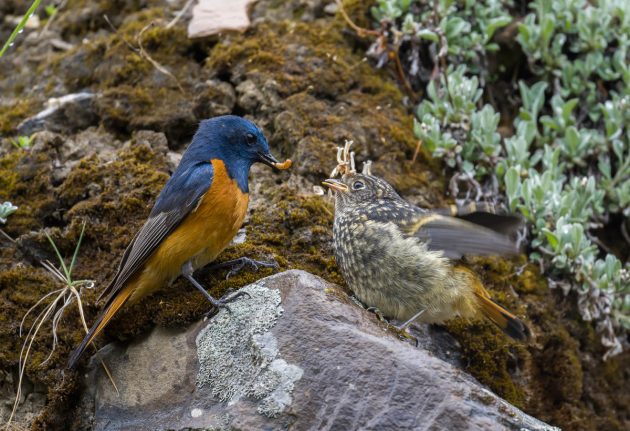
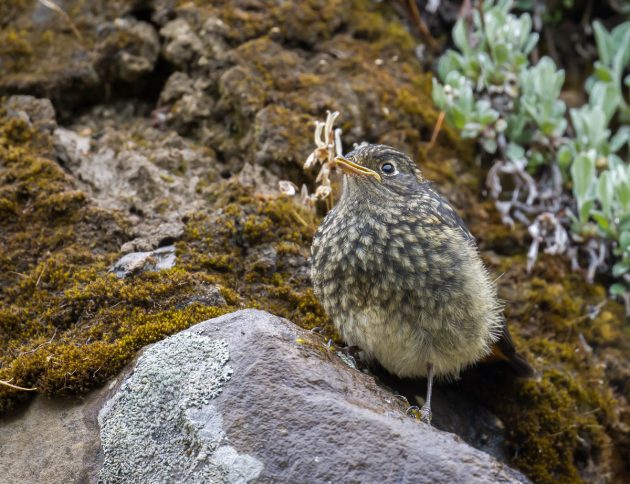
The Rosy Pipit appears a bit oversold to me because it takes plenty of goodwill to see the rosiness of the species. Being moist appears to assist, although.
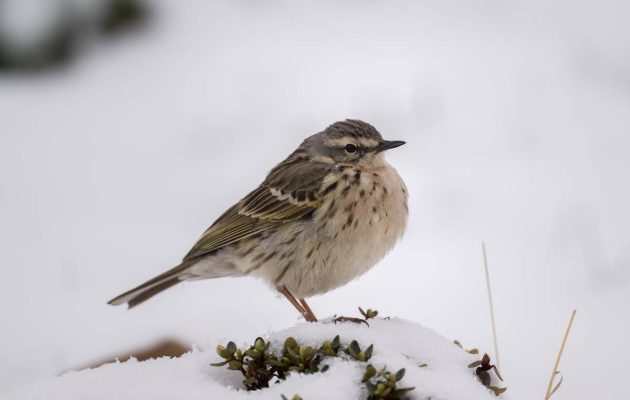
BirdingAsia has a report on the primary Rosy Pipit seen in Mongolia. Frankly, I discover such stories comparatively meaningless, however I assume they provide a way of goal to the listers of this world.
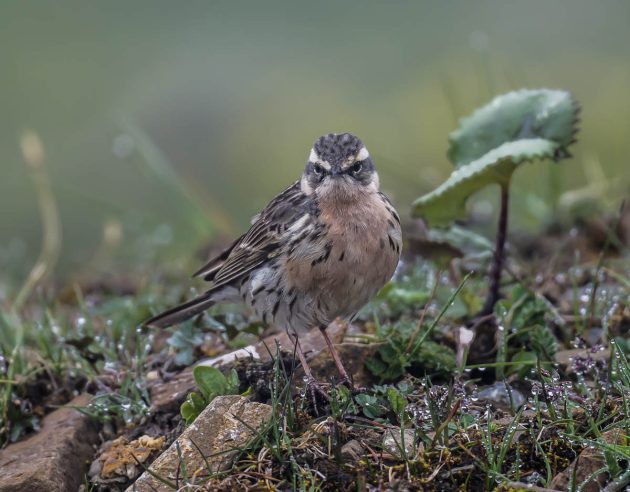
In keeping with the HBW, the Purple-fronted Rosefinch is the highest-breeding passerine in China, dwelling at an altitude of about 3300-5700 meters
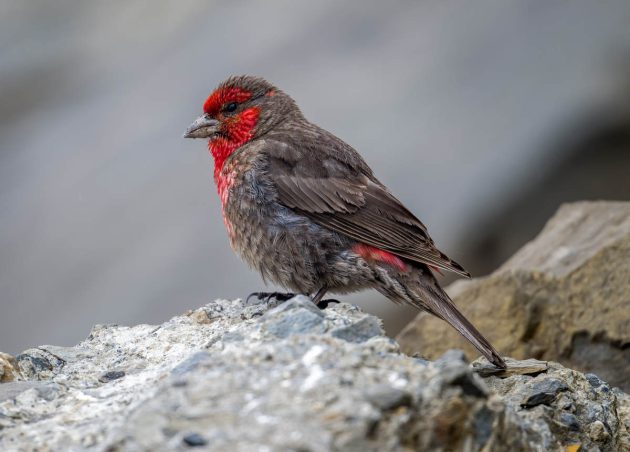
Certainly these images have been taken very near the move, at roughly 4500 meters – the best rosefinch sighting on this journey.
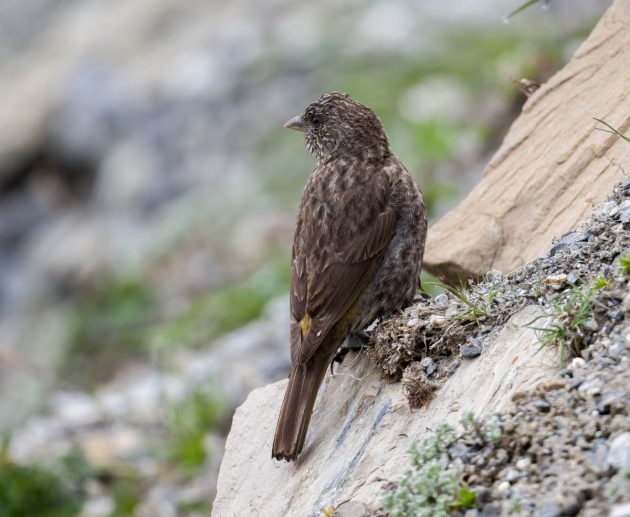
Being monogamous, this huge rosefinch presumably frowns on the polygynandrous Alpine Accentors dwelling on the similar altitude. However fortuitously, they make no efforts to limit the approach to life of the accentors, ban their books, or stop them from educating their chicks about intercourse.
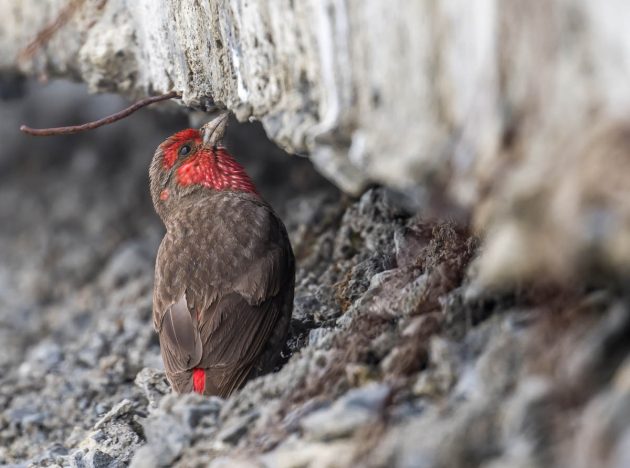
For a pronunciation train, possibly the next sentence is an effective selection: The Latin species identify of the Chinese language Rubythroat is tschebaiewi, because the species was named by the Russian geographer Nikolay Przhevalsky in honor of the Cossack Pamfili Tschebaeiv who accompanied Przevalsky on his travels (be aware to sticklers: the 2 completely different spellings of Przevalsky are taken straight from the Wikipedia article).
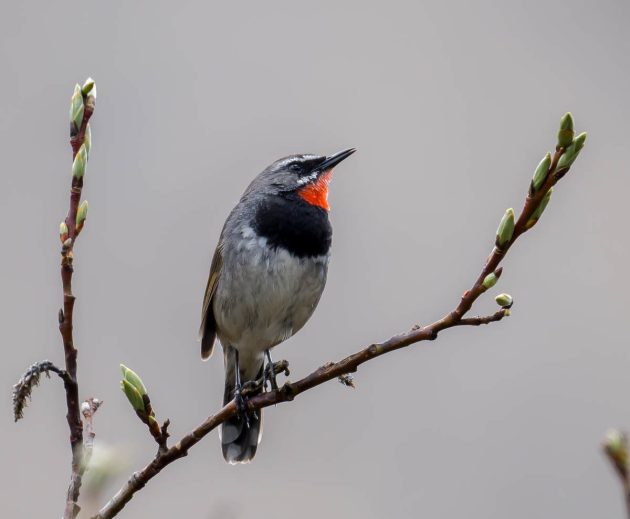
That’s the Przevalsky/Przhevalsky who apparently despised the Chinese language and overtly referred to as for Russia’s annexation of bits and items of China’s territory – not fairly what Mr. Xi had in thoughts when he proclaimed a “no-limits friendship” between the 2 nations.
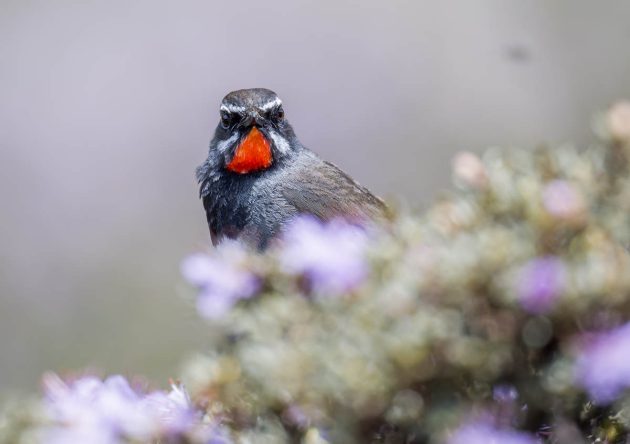
Whereas the Chinese language Rubythroat is said to each the Siberian Rubythroat and the Himalayan Rubythroat, the consensus appears to be that it is a separate species. One study particularly suggesting this ends with the reasonably ChatGPT-like sounding pompous sentence “Our research stresses the significance of making use of an integrative taxonomy strategy to completely unravel the true avian range within the Sino-Himalayan Mountains”. Then once more, the ChatGPT coaching should have included hundreds of thousands of similarly-sounding scientific papers, so possibly the similarity is no surprise.
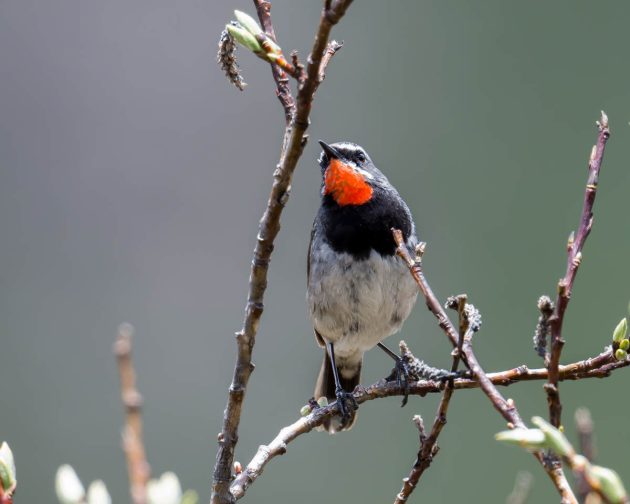
Additionally accessible as video here and here.
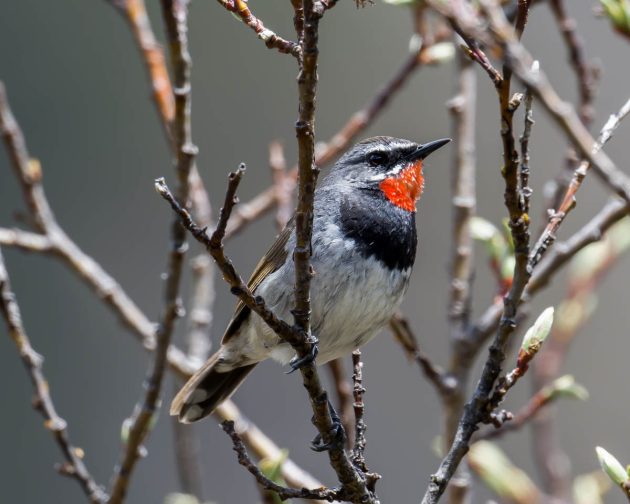
The White-browed Tit-warbler solely gave me a number of unsatisfactory pictures of the feminine this time. So ungrateful. Subsequently, no factoids about it on this put up.
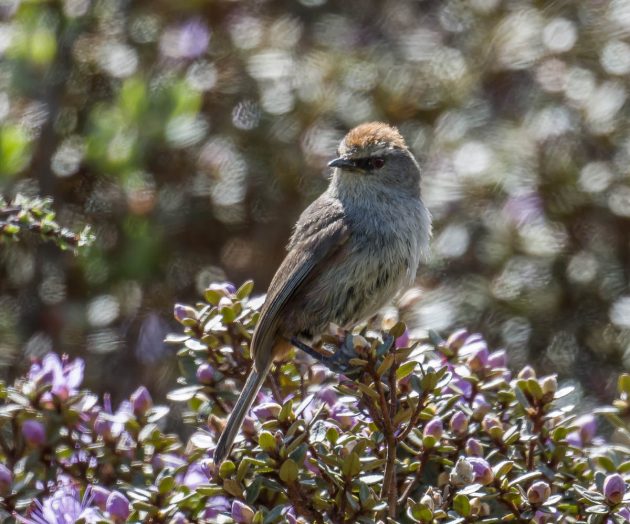
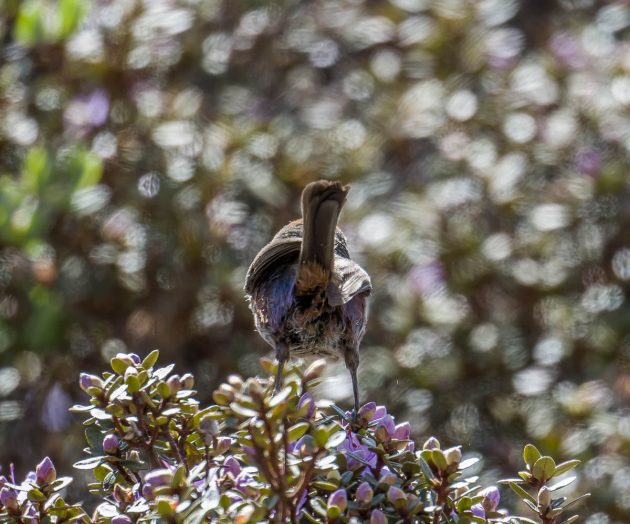
Sadly for the species, the identify of the Plain Mountain Finch appears reasonably correct. eBird agrees, calling it a “fittingly-named brown finch … [that is] drab brown total”.
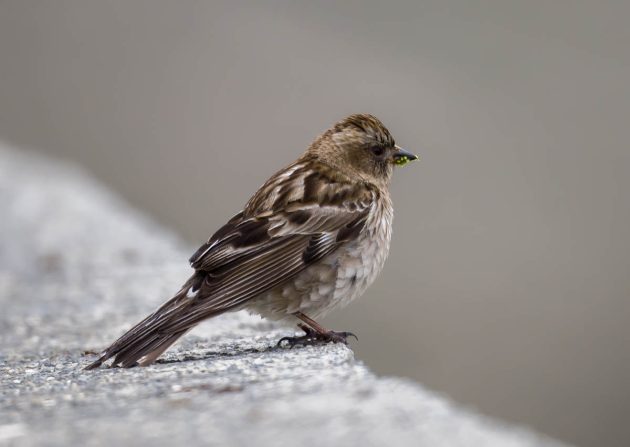
Accordingly, not a lot analysis appears to have been carried out on the species. Not glamorous sufficient, I assume.
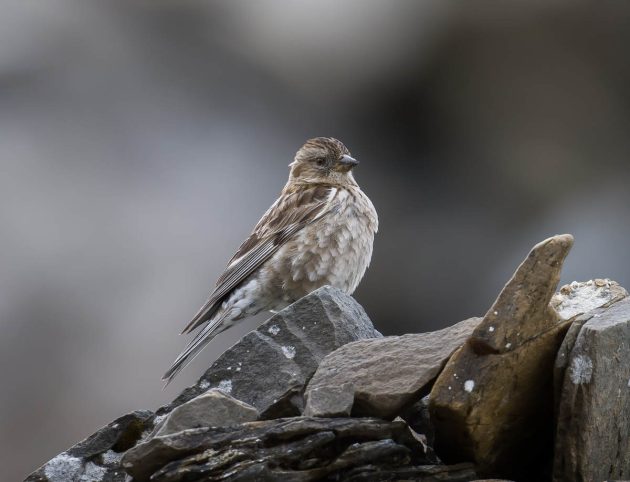
Surprisingly, in accordance with the HBW, among the many nest predators of the species are giant snails.
The Alpine Leaf Warbler is among the many barely extra enticing leaf warblers in China – which admittedly doesn’t imply a lot.
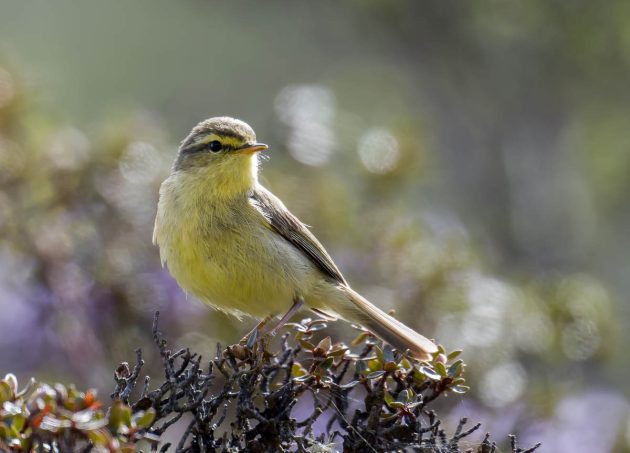
For an introduction to the complete horror of leaf warbler identification, look here. It has such encouraging picture annotations as “P. affinis [Tickell’s Leaf Warbler] in Xizang. In follow inseparable from P. occisinensis [Alpine Leaf Warbler]”. Apparently, DNA evaluation confirmed that the Alpine Leaf Warbler diverged from Tickell’s Leaf Warbler about 4 million years in the past, however this time was not utilized to develop any helpful visible variations – a little bit of a waste of time in the event you ask me.
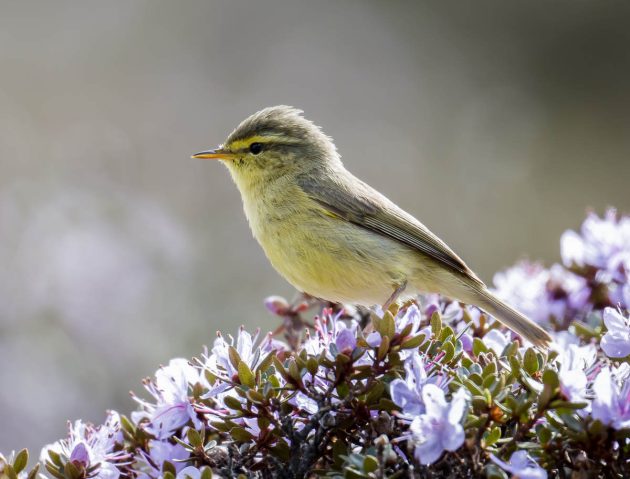
Truly, in accordance with the HBW, these two species are nonetheless only one. Then again, it appears the HBW is commonly reluctant so as to add new species, as a substitute murmuring about future modifications that often fail to occur. So, I assume it’s best to first wait a number of extra million years and see how issues develop earlier than coming to any last conclusion.
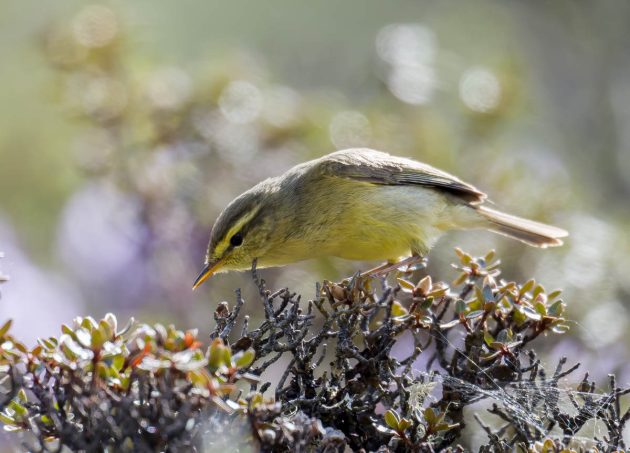
[adinserter block=”1″]
Source link

